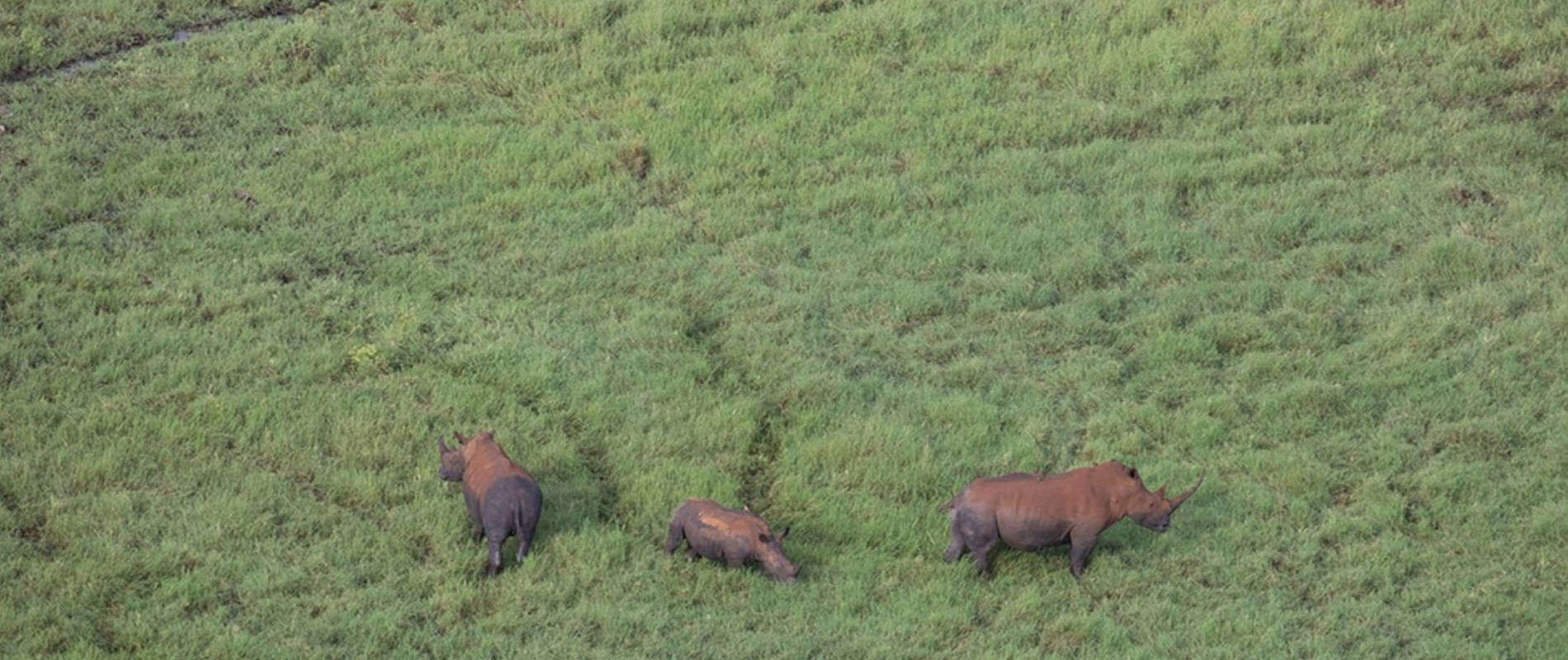After months of hard work, we are delighted to announce the completion of the Meru Rhino Sanctuary extension and upgrade
After months of hard work, we are delighted to announce the completion of the Meru Rhino Sanctuary extension and upgrade. The project, which we undertook in partnership with the Kenya Wildlife Service (KWS), was funded entirely through donations from supporters and offers Kenya's rhinos a brighter future in a larger and more viable Sanctuary within the beautiful Meru National Park.




To celebrate the completion of the upgrade, on 5th of April, the SWT and KWS held a handover ceremony attended by Robert Carr-Hartley from the David Sheldrick Wildlife Trust, the Principle Secretary of Tourism Dr. Margaret Mwakima, and KWS Mr. Julius Kimani along with senior management from Meru National Park. During the ceremony, the SWT also donated to KWS Meru National Park a fully customized land cruiser, to be used to further boost security within the Park.


The Meru Rhino Sanctuary is an important stronghold for Kenya’s rhino population and one that at the request of KWS the SWT has been able to extend and upgrade to better accommodate the rhinos that call it home, and hopefully see the existing population increase substantially in the future. Through the support of SWT donors, we have been able to expand the Sanctuary from 48km² to 83.5km², providing more space for the growing resident rhino population that live within the sanctuary's protected boundaries, which according to a KWS report in 2017, stood at 61 white rhinos and 28 black rhinos.


As part of the upgrade, we have also built two security bases which house KWS Security rangers and SWT funded fence maintenance teams. This brand new perimeter electric fence line has been redesigned to be unobtrusive and has been extended a further 25.6 km, we have also incorporated 20 strategically located wildlife corridors with a design that allows the free movement of elephants and other wildlife in and out of the Sanctuary, with the exception of rhinos. These simple but effective corridors consist of thick, short posts spaced across a gap in the fence and prevent rhinos from moving beyond the Sanctuary since they are unable to climb over, or squeeze between, the posts.


The SWT has a long and rich history of rhino conservation in Kenya and was involved in establishing the country’s first fenced special rhino sanctuaries in both Lake Nakuru National Park and later in Tsavo West National Park in conjunction with the Eden Wildlife Trust and African Wildlife Foundation. Moreover, in the early 1960s, our Founder Dr. Dame Daphne Sheldrick pioneered the milk formula and the husbandry necessary to hand rear orphaned black rhino calves and, over the years, Daphne and the SWT have hand-raised 16 orphaned black rhinos and rehabilitated them successfully in Tsavo East National Park and Nairobi National Park.



As we strive to help KWS protect these iconic creatures from the threat of poaching, fuelled by the demand for rhino horn, The SWT will continue to support KWS in Meru National Park with a second phase being the redoing of the boundary fence lines for Meru National Park, rebuilding them into a 14 strand unshortable barrier electical fence along with the ongoing operations of SWT/KWS Veterinary and De-snaring Teams based there, and these two teams have already been active in this area now for six years.
In particular, since its launch in 2013, the SWT/KWS Meru Mobile Veterinary Unit, headed by KWS Veterinary Officer Dr Bernard Rono, has directly supported Meru’s rhino population attending to 165 rhino related veterinary incidents in the greater Meru ecosystem, comprising of ear notching exercises to ensure that individuals are easy to identify and to treat wounds brought about due to fighting and wounds made from the filarial fly, and a further 529 cases of other wildlife species in total have been treated by this Unit. Additionally, since its inception in 2014, the SWT/ KWS Meru De-Snaring Unit (comprising of graduates from KWS Field Training School in Manyani) has confiscated 5,236 illegally lain snares and significantly contributed to deterring illegal activities due to regular patrols along the vulnerable boundaries of the National Park.



Given the suitability of habitat for rhinos in Meru National Park, the Meru Rhino Sanctuary offers them a secure sanctuary and a place for sustainable growth, and it is our hope that in the coming years, it will house one of the largest rhino populations in Kenya. Our sincere thanks to everyone who donated towards this vital initiative to protect and preserve Kenya’s black rhino population, and special thanks goes to our conservation partner the Kenya Wildlife Service.





















